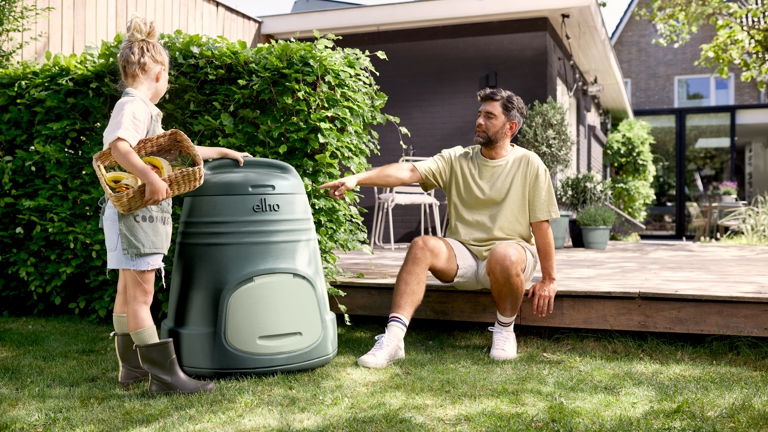
Turn waste into plant food!
Getting started with composting
With our composter you can easily turn your organic waste into high-quality compost. This compost is a real hero for happy, healthy gardens. All you need is a little attention and patience. We would love to help you to start on your composting journey and make it fun! Our products make sure you can do this in the easiest and simplest way possible. Let's go!
Getting started
Hey there gardening pro-to-be! Ready to turn kitchen scraps into plant food? Great that you want to explore the world of composting. We'll help you get off to a flying start by following our simple steps.
Composting is an easy, sustainable way to turn kitchen scraps and garden waste into nutritious compost for your garden. Here’s how to start your composting journey:
- Finding the perfect spot. Find a semi-shaded, level area on bare soil for your compost bin. Bare soil helps beneficial worms and microbes join the process, breaking down waste naturally. Since our elho composter looks great, there's no need to hide it at the back of the garden.
- Create a base layer. Remove the lid and create a base layer with "brown" materials like straw or small twigs. This promotes drainage and airflow, and gives your compost a good start. Make sure there is enough room for air to flow through your waste.
- Start adding layers. Now you can start adding "green" materials (think fruit peels and veggie scraps) and alternate with more "brown" materials (like dry leaves or shredded paper). This layering is essential: it balances carbon and nitrogen, turning waste into nutritious soil.
You're almost there! Well, not quite... But the process has definitely begun! Now all you need is a little attention and patience. Put the lid on, and let nature do its thing. Over time, your compost will break down into rich soil, perfect for nourishing your garden.

What (not) to compost
What (not) to compost
So, you’ve installed your elho composter in the right place and added the first layers. This gives us some time to tell you some more about the basics of composting and the process.
Cold composting
With the elho composter, you're in for a relaxed, low-maintenance "cold composting" experience. You’ll build up layers over time. Here are some keys to success:
Your own compost, what’s next?
Once your compost has fully broken down into that rich, dark, crumbly soil, it’s ready to use! Compost is like gold for your plants, whether you’re gardening outdoors or caring for houseplants inside. Here’s how to make the most of its benefits. Two simple ways to use compost
- As a topsoil layer (2–5 cm): Spread a thin layer of compost on top of the soil in your garden beds or pots. This top layer helps improve soil structure, enhances water retention, and gradually releases nutrients to plants as it breaks down further.
- As a liquid fertilizer: Create a compost “tea” by mixing compost with lukewarm water. Simply add a couple of handfuls of compost to a bucket, a watering can or whatever suits you, fill with water and give it a stir.

Benefits
Whether you’re boosting your vegetable garden, your garden or nurturing indoor plants, compost is an easy, natural way to help all your plants thrive. Enjoy the rewards of your composting efforts by giving your plants the best nature has to offer! And there’s something to love, as compost has many positive effects to nature.
Here are some of the positive effects you’ll notice:
- Better soil structure and stronger plants.
- Less water needed due to better moisture retention.
- Environmentally friendly and cost-effective!









